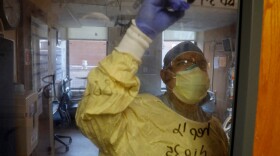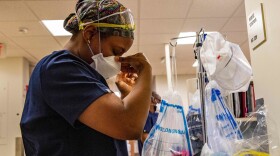A new Rice University study suggests Black and Hispanic residents across the state bore a larger portion of the economic burden from COVID-19 deaths early on in the pandemic.
Rice undergraduate students and faculty used a variety of data to analyze the early pandemic numbers for Harris County and found that although Hispanic residents make up 33% of Harris County's population, they absorbed 45% of the economic losses from COVID mortality early in the pandemic. Black residents make up 15% of Harris County's population but suffered about a quarter of the economic burden.
White residents make up 45% of the county’s population and bore 24% of the economic burden.
"These numbers just suggest that we do have clearly asymmetric distribution of human costs and economic costs in Harris County and if we were able to upscale this to the whole state of Texas, I have no doubt we would be able document this in other parts of the state," said Rice climate scientist and the study's corresponding author Sylvia Dee said.
Early in the pandemic, Harris County was unique in breaking down COVID deaths by age and race, which allowed Rice researchers see how those deaths affected each community in the Houston area.
The Texas Department of State Health Services did not break down deaths by race and age early on, but does now. A spokesperson for the agency said the change came in July of 2020 as part of an effort to be more transparent about COVID-19 data.
But Dee said the delays in reporting means the full scope of the burden on minority communities may never be known.
“That lack of data completely prevents us from quantifying the total losses for different race and ethnic groups and that ability to quantify what are the actual costs associated with COVID deaths for these communities and quantify how much more of an impact this has had on our ethnic minority groups is a big problem," Dee said.
The analysis was part of a larger project involving Rice and Princeton undergraduates and five Rice faculty members examining the impact of the pandemic on minority communities across the state.
Researchers with Rice University's COVID-19 Research Fund had initially set out to determine if bad air in Harris County affected COVID-19 mortality, but found race and ethnicity was a better predictor of mortality than air quality.
“We get a significant positive correlation between race and ethnicity and COVID-19, but we do not find a significant correlation between air quality and COVID-19," Dee said.
Copyright 2022 Houston Public Media News 88.7. To see more, visit Houston Public Media News 88.7.










